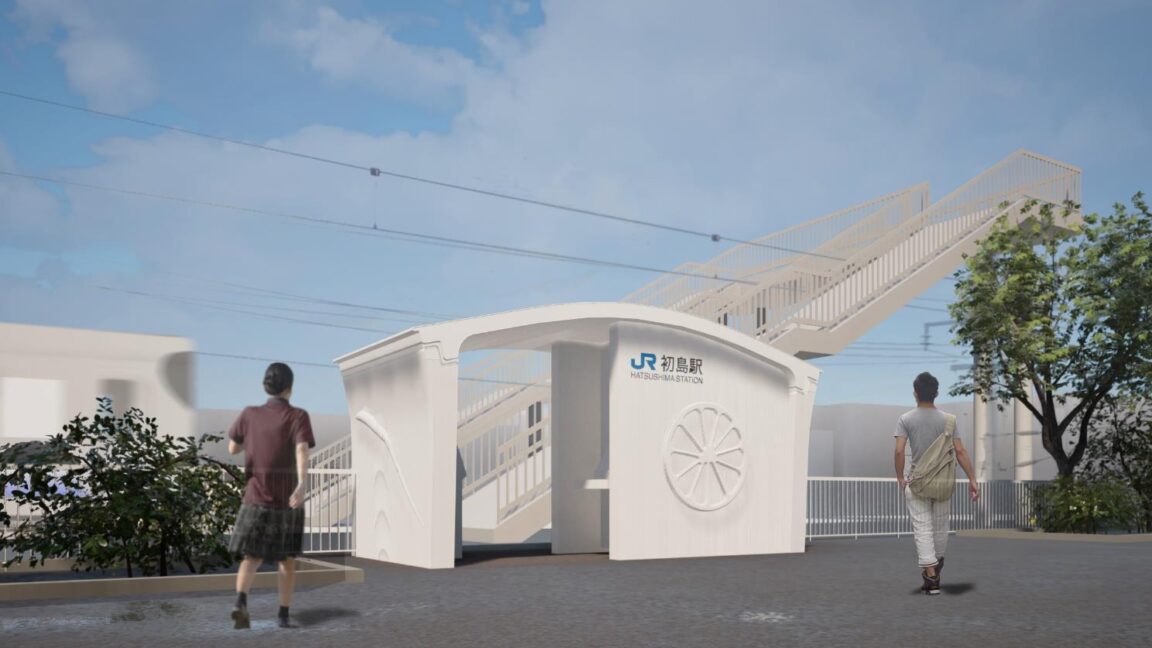Custom-printed shelters could help fix up rural train stops faster.
Hatsushima is not a particularly busy station, relative to Japanese rail commuting as a whole. It serves a town (Arida) of about 25,000, known for mandarin oranges and scabbardfish, that is shrinking in population, like most of Japan. Its station sees between one to three trains per hour at its stop, helping about 530 riders find their way. Its wooden station was due for replacement, and the replacement could be smaller.
The replacement, it turned out, could also be a trial for industrial-scale 3D-printing of custom rail shelters. Serendix, a construction firm that previously 3D-printed 538-square-foot homes for about $38,000, built a shelter for Hatsushima in about seven days, as shown at The New York Times. The fabricated shelter was shipped in four parts by rail, then pieced together in a span that the site Futurism says is "just under three hours," but which the Times, seemingly present at the scene, pegs at six. It was in place by the first train's arrival at 5:45 am.
Either number of hours is a marked decrease from the days or weeks you might expect for a new rail station to be constructed. In one overnight, teams assembled a shelter that is 2.6 meters (8.5 feet) tall and 10 square meters (32 square feet) in area. It's not actually in use yet, as it needs ticket machines and finishing, but is expected to operate by July, according to the Japan Times.
The structure itself is made of mortar, layered like dull-green frosting by a 3D-printing nozzle, reinforced by steel and framed at its edges by concrete. The result is a building that has "earthquake resistance similar to that of reinforced concrete houses," according to West Japan Railway (JR West), and costing about half of what the shelter would cost to build with traditional reinforced concrete. It also has a mandarin orange and scabbardfish embossed into its sides.
The rail company told the Times that it hoped this kind of construction could keep remote stations active at lower costs and with fewer workers.
“We believe that the significance of this project lies in the fact that the total number of people required will be reduced greatly,” Ryo Kawamoto, president of JR West's venture capital arm, told The New York Times.
Hope you enjoyed this news post.
Thank you for appreciating my time and effort posting news every day for many years.
News posts... 2023: 5,800+ | 2024: 5,700+ | 2025 (till end of March): 1,357
RIP Matrix | Farewell my friend ![]()
- Mutton
-

 1
1



3175x175(CURRENT).thumb.jpg.b05acc060982b36f5891ba728e6d953c.jpg)
Recommended Comments
There are no comments to display.
Join the conversation
You can post now and register later. If you have an account, sign in now to post with your account.
Note: Your post will require moderator approval before it will be visible.